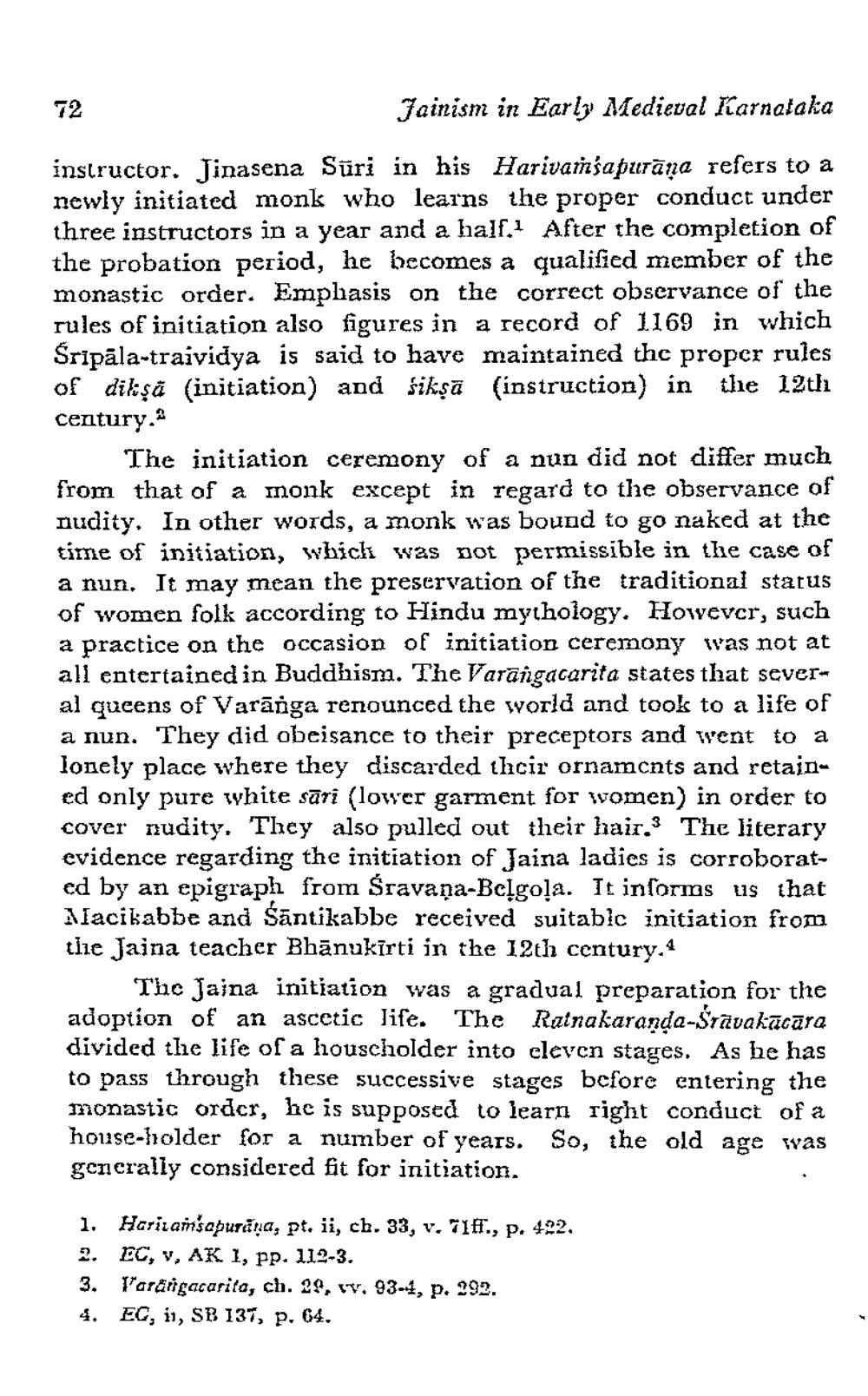________________
Jainism in Early Medieval Karnataka
instructor. Jinasena Sūri in his Harivamsapurāna refers to a newly initiated monk who learns the proper conduct under three instructors in a year and a half.1 After the completion of the probation period, he becomes a qualified member of the monastic order. Emphasis on the correct observance of the rules of initiation also figures in a record of 1169 in which Sripāla-traividya is said to have maintained the proper rules of dilşa (initiation) and siksa (instruction) in the 12th century.
The initiation ceremony of a nun did not differ much from that of a monk except in regard to the observance of nudity. In other words, a monk was bound to go naked at the time of initiation, which was not permissible in the case of a nun. It may mean the preservation of the traditional status of women folk according to Hindu mythology. However, such a practice on the occasion of initiation ceremony was not at all entertained in Buddhism. The Varangacarita states that several queens of Varānga renounced the world and took to a life of a nun. They did obeisance to their preceptors and went to a lonely place where they discarded thcir ornaments and retaincd only pure white sāri (lower garment for women) in order to cover nudity. They also pulled out their hair.3 The literary evidence regarding the initiation of Jaina ladies is corroborated by an epigraph from Sravana-Bclgola. It informs us that Nacikabbe and Sāntikabbe received suitablc initiation from tile Jaina teacher Bhānukīrti in the 12th century.4
Thc Jaina initiation was a gradual preparation for the adoption of an ascetic life. The Rainakaranda-Śravakācāra divided the life of a houscholder into elevcn stages. As he has to pass through these successive stages before entering the monastic order, he is supposed to learn right conduct of a house-holder for a number of years. So, the old age was gencrally considered fit for initiation.
1. Haritamsapurina, pt. ii, ch. 33, v.718., p. 4.2. 2. EC, V, AK 1, pp. 112-3. 3. Parängacarita, ch. 29, vv. 93-1, p. 292. 4. EG, 11, SB 137, p. 64.




